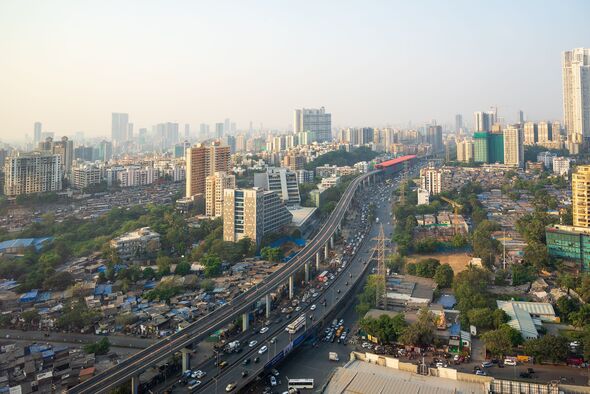A huge section of the bullet train project, which will be one of the fastest in the world, has been completed, with a full completion date of 2027. The 315-mile line will connect Mumbai and Ahmedabad and is estimated to cost about 1 trillion rupees – or £10.6 billion.
A 118-mile section of viaduct and nearly 200 miles of pier work on the Mumbai-Ahmedabad bullet train project have been completed, the National High Speed Rail Corporation Limited (NHSRCL) has confirmed. Bridge work on eight of the total 24 river bridges has also been completed.
NHSRCL officials, providing details of the project, said that two-state-of-the-art Track Slab manufacturing facilities in Surat and Anand are fully functional to support the track system.
The completion of the first 350-metre mountain tunnel near Zaroli Village in Valsad was also announced. Three steel bridges, measuring 70 metres, 100 metres and 130 metres have also been completed in Surat, Anand and Vadodara respectively.
Bridge works along the train corridor, including those on the Par, Purna, Mindhola, Ambika, Auranga, Venganiya, Mohar and Dhadhar rivers have also been completed. Work on the other major rivers such as the Narmada, Tapti, Mahi and Sabarmati are still in progress.
In Maharashtra, work has begun on a 4.3-mile underwater rail tunnel, which forms part of a 13-mile-long tunnel between the Bandra Kurla Complex (BKC) and Shilphata. In Gujarat, foundation work for a 210-mile section of the 218-mile viaduct has also been completed, along with the casting of 5,549 girders, covering just under 138 miles.
The foundation work for all eight train stations, including Vapi, Bilimora, Ahmedabad and Sabarmati, has also been finished.
At the Sabarmati Depot, earthwork is finished and overhead equipment foundation work is in progress, along with the construction of an administrative building and various sheds and workshops, NHSRCL officials added.
The officials also stated that all civil contracts for the project have been awarded in both states – Maharashtra and Gujarat. All depot and electrical contracts have also been awarded. They confirmed that 100 percent of the land acquisition in Gujarat, Dadra and Nagar Haveli (DNH) and Maharashtra has been finalised.
The Mumbai-Ahmedabad project will connect India’s financial hub with the largest city of Gujarat and is hoped to usher in huge economic growth. When it opens, it will be India’s first high-speed rail line.
With a top speed of 220 mph, the planned 315-mile track is said to reduce the distance from nearly eight hours by train – or 10 by car – to just over two hours.
Construction began in April 2020 with the first phase planned to be functional by August 2026. The current plan is to be fully operational by 2027.
They will begin with 35 trains, without about 70 trips a day and hope to increase this to 105 trains by 2050. 17,000 people are expected to travel in the first year, with hopes that the network will welcome 93,000 by their 30th year.
The Mumbai-Ahmedabad network will also use Japanese Shinkansen technology to ensure passenger safety and speed. This includes incredibly streamlined, aerodynamic trains, with noses tapered like that of an aeroplane, flatcar passenger compartments which are fitted with an air spring to absorb wheel vibrations and wide-gauge tracks with no sharp curves.
Finally, Shinkansen tracks never cross other lines on the same level, so the trains never have to stop and wait for others to pass.
